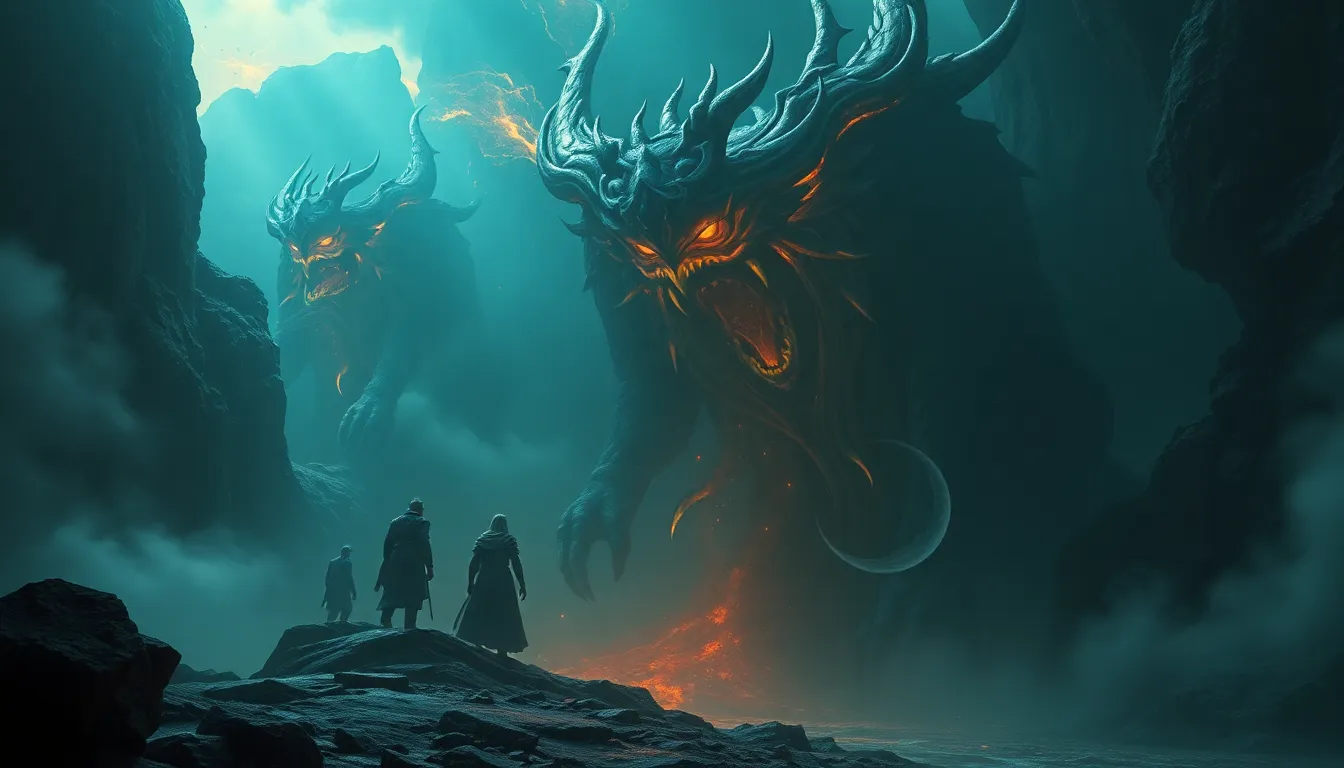The Price of Immortality: Trials That Transformed Ordinary Mortals
I. Introduction
Immortality has fascinated humanity throughout history, manifesting in various forms across cultures. From ancient deities to modern scientific aspirations, the concept of eternal life evokes a blend of awe and dread. Immortality can be defined as the ability to live indefinitely, transcending the natural limitations of human existence. In many cultural contexts, it is synonymous with divine favor, ultimate knowledge, or unquenchable desire.
The allure of eternal life often comes with profound consequences. The pursuit of immortality can lead individuals down arduous paths, filled with trials and tribulations that alter their very essence. This article explores the historical, scientific, and psychological dimensions of immortality, examining the trials faced by those who seek to transcend mortality.
In this exploration, we will delve into the myriad challenges encountered by individuals in their quest for eternal life, revealing how these experiences transform ordinary mortals into legends.
II. Historical Perspectives on Immortality
A. Ancient civilizations and their quests for eternal life
Throughout history, civilizations have woven narratives around the desire for immortality. These narratives often reflect their cultural beliefs and values.
- Mesopotamian myths and the Epic of Gilgamesh: One of the earliest literary works, the Epic of Gilgamesh, chronicles the king’s journey to find eternal life after the death of his friend Enkidu. His quest ultimately teaches him that immortality is reserved for the gods, while humanity must accept mortality.
- Egyptian beliefs in the afterlife and mummification: Ancient Egyptians revered the afterlife, believing in a form of immortality achieved through mummification and elaborate burial rites. They viewed life as a journey to be continued beyond death, with the soul living on in the Field of Reeds.
B. Philosophical interpretations of immortality through the ages
Philosophers have long pondered the implications of immortality, offering various interpretations that resonate with the human experience.
- Greek philosophies: Plato and Aristotle: Plato proposed the immortality of the soul, arguing that true knowledge is eternal. Aristotle, however, focused on the importance of living a virtuous life, suggesting that one’s legacy may provide a form of immortality through memory.
- Modern existentialism and the human condition: In the modern era, existentialist thinkers like Jean-Paul Sartre and Albert Camus explored the absurdity of life and death, emphasizing the value of the present moment over the desire for eternal existence.
III. The Science of Immortality
A. Advances in biotechnology and genetic manipulation
In recent years, science has made significant strides toward understanding and potentially achieving immortality. Biotechnology and genetic manipulation are at the forefront of this revolution.
Innovations such as CRISPR technology enable scientists to edit genes, potentially eradicating diseases associated with aging. These advancements raise questions about the future of human longevity and the possibility of extending life indefinitely.
B. The role of regenerative medicine and stem cell research
Regenerative medicine, particularly stem cell research, offers promising avenues for combating age-related degeneration. By harnessing the body’s natural healing processes, scientists aim to repair or replace damaged tissues and organs, thus extending life expectancy.
C. Ethical dilemmas surrounding scientific pursuits of immortality
The quest for immortality through science is fraught with ethical dilemmas. Questions arise regarding:
- Equity: Who will have access to life-extending technologies?
- Natural order: Should humans interfere with the natural cycle of life and death?
- Societal impact: How would a significant increase in lifespan affect resources, employment, and social structures?
IV. Personal Trials and Transformations
A. Case studies of individuals seeking immortality
Many historical and modern figures have embarked on quests for immortality, leaving behind legacies that reflect their struggles.
- Historical figures and their legacies: Figures like Ponce de León sought the Fountain of Youth, embodying the timeless quest for eternal life. Their journeys often ended in tragedy, highlighting the futility of their pursuits.
- Modern-day seekers and their journeys: Today’s tech moguls invest in anti-aging research and life-extension technologies, hoping to defy the natural aging process. Their journeys are marked by both innovation and existential contemplation.
B. Physical, mental, and emotional costs of the quest for eternal life
The pursuit of immortality exacts a heavy toll on individuals. Physical challenges include the strain of medical procedures and the potential side effects of experimental treatments. Mentally, the obsession with eternal life can lead to anxiety and despair, as individuals grapple with their mortality.
Emotionally, relationships may suffer as the seeker becomes consumed by their quest, distancing themselves from loved ones who may not share their aspirations.
V. Societal Impacts of Immortality
A. Implications for population growth and resource distribution
Should immortality become attainable, the implications for society would be profound. A significant increase in population could lead to resource depletion, environmental strain, and challenges in sustainable living.
B. Changes in social structures and family dynamics
Immortality could reshape family structures, with generations living side by side for centuries. Traditional notions of family roles and responsibilities may evolve, leading to new societal norms.
C. The potential for inequality in access to immortality
If life-extending technologies are only accessible to the wealthy, a divide could emerge between those who can afford to live indefinitely and those who cannot, exacerbating existing social inequalities.
VI. The Role of Myth and Folklore
A. Stories and legends surrounding immortality
Myths and folklore provide rich narratives about immortality, reflecting societal values and fears. From the tales of the Greek gods to the legends of the elixir of life, these stories shape our understanding of life and death.
B. How myths shape societal views on life and death
Myths often serve as cautionary tales, warning against the hubris of seeking to defy death. They help frame the cultural narrative around mortality, encouraging acceptance rather than fear.
C. The impact of folklore on personal beliefs about immortality
Folklore influences individual beliefs, creating a tapestry of ideas about death and what lies beyond. These stories can instill hope or dread, shaping how people approach their mortality.
VII. The Psychological Toll of Seeking Immortality
A. Fear of death and its effects on mental health
The fear of death can lead to anxiety and depression. In the quest for immortality, individuals may grapple with existential dread, questioning the meaning of life in the face of inevitable mortality.
B. The phenomenon of immortality anxiety
Immortality anxiety refers to the anxiety stemming from the desire to avoid death. It can manifest as an obsessive preoccupation with health and longevity, impacting overall well-being.
C. Coping mechanisms and philosophical reflections
Individuals may turn to various coping mechanisms, such as mindfulness, philosophical inquiry, or spiritual beliefs, to reconcile their fear of death and the pursuit of immortality.
VIII. Cultural Representations of Immortality
A. Immortality in literature and art
Literature and art often explore the theme of immortality, reflecting societal fascinations and fears. Notable works include:
- Mary Shelley’s “Frankenstein”: A tale that questions the morality of creating life and the consequences of playing God.
- Gabriel García Márquez’s “One Hundred Years of Solitude”: A narrative woven around the Buendía family, exploring cyclical time and the burden of memory.
B. The portrayal of immortal beings in popular media
Popular media, such as films and television series, frequently depict immortal beings, from vampires to superheroes, shaping public perception of immortality as both alluring and perilous.
IX. Alternatives to Immortality
While the quest for immortality is often romanticized, many find solace in alternatives that emphasize a fulfilling life rather than eternal existence. Some alternatives include:
- Legacy building: Focusing on creating a lasting impact through contributions to society or the environment.
- Mindfulness and presence: Embracing the moment and finding joy in life as




